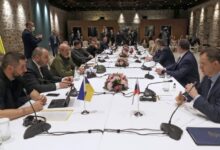
There will be no going back to the pre-2022 state of affairs. The US-led bloc has pushed Moscow too far
By Ivan Timofeev, Valdai Club Programme Director & one of Russia’s leading foreign policy experts.
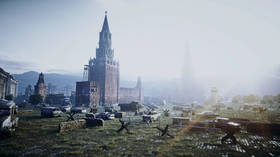
3D rendering of the apocalypse in Red Square, Moscow, Russia. © Getty Images/Pavel_Chag
There is an increasingly widespread view in Russia that the goal of the US – and the “collective West” it leads – is to achieve a “final solution” to the “Russian question.” The goals are believed to be defeating Russia, wrecking its military potential, restructuring its statehood, reshaping its identity and possibly eliminating it as a state, in its current form.
For a long time, this view remained on the periphery of foreign policy thinking. However, much has changed in the past year and a half. Today, this perception of the West’s goals has gone mainstream. Indeed, it seems quite rational, when placed into the proper context.
Meanwhile, Russia itself is pursuing a similar sort of policy towards the Ukrainian state, the existence of which in its former form and borders is perceived in Moscow as a key security challenge.
The historical experience of the last century shows that inflicting total defeat on an enemy and then rebuilding its statehood is the rule rather than the exception in foreign policy practice. There is an important difference to the conflicts of the 18th and 19th centuries, when military defeat of the enemy was seen as a way of extracting concessions from it, but not of rebuilding its very foundations.
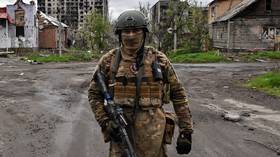
Read more
The experiences of the 20th and 21st centuries are not always linear, but their repetition is obvious. Germany’s defeat in the First World War led to a palpable reshaping of its statehood, determined more by internal contradictions, which grew from the military loss.
Germany’s surrender after the Second World War had far more radical consequences. The country was divided, stripped of its foreign policy autonomy and almost completely rebuilt. Military defeat and subsequent occupation also led to the reformatting of the other large powers, Japan and Italy. The Soviet Union, as a victorious country, was a key player in resolving the “German question.” The USSR was also active in establishing socialist regimes in countries liberated from the Nazi occupation.
The subsequent Cold War made this redrawing more difficult. Every attempt was met with resistance from the West. Sometimes the battle ended in a draw, as in Korea. Sometimes the Soviet Union got the upper hand – it helped to inflict a painful defeat on the US in Vietnam, for example. In other situations, the US was successful, for example in supporting anti-Soviet forces in Afghanistan.
The collapse of the Soviet Union gave Washington a free hand. Despite Moscow’s rhetoric that the Cold War had ended in victory for both sides, the reality was different.
Many of the former socialist countries were quickly integrated into Euro-Atlantic structures with the active help of new local elites and broad public support. Russia itself loudly proclaimed a desire to return to the ‘civilized world.’ The US-led collective West was given carte blanche to reshape a vast area, which they not unreasonably saw as a result of their bloodless victory over the Soviet Union.
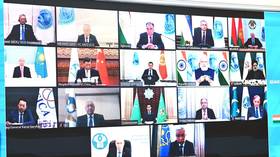
Read more
In the absence of a counterweight, the US carried out several military interventions, which also resulted in a complete restructuring of the target states. Yugoslavia fell apart. Iraq was occupied, its leader executed and its system of government transformed. There were also failures. In Afghanistan, a quick victory turned into a stubborn guerrilla war and subsequent humiliating withdrawal. A military intervention in Iran did not take place, although it was planned. North Korea became a nuclear power, dramatically reducing the likelihood of external invasion. Successful US interventions provoked Moscow’s displeasure, but this did not translate into real action until a certain point. Domestically, large-scale Western investment, close humanitarian cooperation and Russian society’s interest in the West were encouraged, or at least not condemned, until the late 2010s.
At the same time, two trends led to sustained and growing irritation from the Russian authorities. The first was the increasingly visible attempts by Western countries to bypass the state and engage in direct dialogue with the Russian public. This paradigm pitted a “good” civil society against a “bad” government. Moscow’s growing and understandable annoyance was triggered by the notion that Russia had a “regime.” It hinted, or even directly stated, that the West somehow contrasted civil society with the government and did not see them as part of the same political community. The more conscious and demonstrative this approach was on the part of Western states, the more it was resisted in Moscow.
In the West, such an approach was attributed to the perceived shortcomings of democracy in Russia, which only added to the irritation.
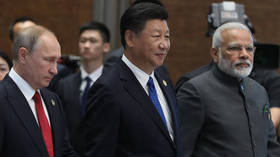
Read more
The Russian authorities clearly did not want to depend on external assessments of their state-building. All the more so as the denominator of such assessments was increasingly set not only by the mature democracies, but also by the Eastern European and Baltic countries with their bouquet of historical grievances and complexes. The experience of ‘color revolutions’ in the post-Soviet space only reinforced Moscow’s fears. In Georgia, Kyrgyzstan and Ukraine, public protests received full moral, political and even material support from Western countries, while the authorities were often demonized.
Revolutionary changes of power, even for the sake of democratization and development, were legitimately perceived in Moscow as a challenge. There was a strong consensus within the Russian elite that state-building should and could only take place through its own efforts. Any form of outside involvement was unacceptable. This consensus began to take shape in the mid-1990s, and by the end of Vladimir Putin’s first term it had become a clear policy point.
The second trend that had a significant impact on changing Russian attitudes was related to US and EU policy in the post-Soviet space. Russia has swallowed the integration of Central and Eastern European countries into Western structures, probably seeing them as toxic assets for itself. Contrary to the common stereotype in the West, which ascribes to Moscow a desire to recreate the USSR, the real goals were far from imperial ambitions.
Russia was not interested in taking on another huge imperial burden, feeding local elites and buying the loyalty of the population. It was quite happy with the neutrality of the former Soviet republics and even with cooperation with the US in the post-Soviet space, provided that such cooperation was on an equal footing. In the early 2000s, Moscow did not object to the American military presence in Central Asia and then helped supply the Western grouping in Afghanistan for a long time. But Moscow was categorically uncomfortable with the prospect of Western projects without Russian participation. Against the background of Vladimir Putin’s active diplomacy to build constructive relations with the US and the EU on all fronts, the hope remained that the area of the ex-USSR would remain a neutral field of cooperation.
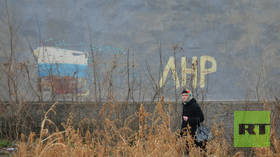
Read more
But it gradually became clear that there would be less and less inclusiveness towards Russia. The aforementioned ‘color revolutions’ were yet another wake-up call. The growing concerns of the Russian leadership were discussed, but each time they were politely dismissed by Western partners. Apparently, the West simply did not see the need to take Russia’s interests into account. After the 1990s collapse of the economy, a massive brain drain, a series of internal conflicts, rampant crime, corruption, capital flight, the transition – which had begun under Soviet leader Leonid Brezhnev – to the status of a commodity appendage, a falling birth rate, alcoholism and an excessively high death rate, Russia was hardly perceived as a serious contender.
The local interests of some post-Soviet elites, who gained political capital by selling the “Russian threat” to the West, also played a role.
Underestimating the Russian leadership’s will to restore statehood and avoid a zero-sum game in the post-Soviet space was a major miscalculation. With each new crisis, the West failed to take into account the real possibility of worst-case scenarios in which Russia would assert its interests by force, leading to a counteroffensive against attempts to reformat the post-Soviet states. The first serious crisis was the five-day war with Georgia, in which the Russian side not only responded violently to an attack on a peacekeeping contingent, but also recognized the independence of Abkhazia and South Ossetia. The West had the foresight to realize the Georgian leadership had made major mistakes and to defuse the crisis with Russia. But the price was the precedent of a de facto revision of borders.
Moscow quickly responded to another Ukrainian revolution in 2013-2014 with the “Crimean Spring,” and then with support for the resistance in Donbass. The Minsk agreements left open the possibility of a relatively easy solution to the crisis. However, Russia’s tough and decisive line had already caused alarm in the West.

Read more
As a result, the US-led bloc chose a path of containment and opposition to Moscow. Western-Russian relations in the post-Soviet space, and in Ukraine in particular, finally turned into a full-on rivalry, and the Minsk agreements were later openly described by some Western leaders as having been merely a maneuver to prepare for a new fight. Russian support for the Syrian government has shown that Moscow is willing to obstruct ‘social engineering’ outside the post-Soviet space as well.
Despite the expectation of a new crisis, the scenario of a full-scale military operation against Ukraine was considered unlikely by many, including in Russia itself. Moscow was deeply embedded in the Western-oriented global economy. Trade interdependence with the EU remained high. There was no rejection of Western values in Russia, although certain social phenomena and movements were criticized as an affront to traditional values. For Moscow, the key issue remained the security of its western borders. Apparently, the Russian authorities assumed the inevitability of a gradual militarization of both Ukraine and NATO’s eastern flank, followed by a military crisis at an inconvenient moment. Neo-Nazism in Ukraine was not widespread and did not enjoy widespread popular support, but the Kiev authorities’ tolerance of radical movements was strongly resented in Russia.
The decision to launch a pre-emptive military operation was a turning point that radically raised the stakes of the rivalry. The ensuing military conflict has largely undone the legacy of the post-Soviet period.
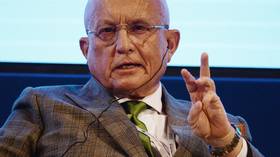
Read more
There will be no return to the reality of 2021. It is clear that Russia will do everything it can to protect the new territorial status quo and to undermine Ukraine’s military potential as much as possible. It is also clear that the West will do everything it can to undermine Russia and, if the circumstances are right, will also use any internal problems to its advantage.
The question remains as to how the current crisis will end.
There is currently no political solution to the Russian-Ukrainian conflict in sight. The sustainability of any peace agreement, even if reached, is highly questionable. The West fears an abrupt military escalation and a war with Russia that could quickly turn into a nuclear exchange. However, NATO’s gradual direct military involvement in the conflict cannot be ruled out.
The prospect of domestic unrest in Russia is widely discussed in Western media and analyzed. So far, such views have clearly not been reflected in official positions. But the transition from musings in the analysts’ community and populist statements by individual politicians to an official position may only be a matter of time. Turmoil in a major nuclear power carries great risks. But in the West they may be perceived as less serious than a direct military confrontation. Meanwhile, an internal political explosion could put Russia out of business for a long time and force it to try to reformat its entire system. In such a development, the preservation of Russia’s statehood and sovereignty will once again become the main stakes of any conflict.
Ukraine’s statehood is also at stake. It is very likely to emerge from the current crisis with diminished capacity, truncated borders and total dependence on external forces.
The US is in a better position. It has been able to discipline its allies against the backdrop of the crisis and does have risks to its own status. However, it has already entered into a rivalry with China and finds itself in a situation of double deterrence. A Russian victory in Ukraine, together a strengthening of relations between Moscow and Beijing, would be a major strategic challenge for the US.




